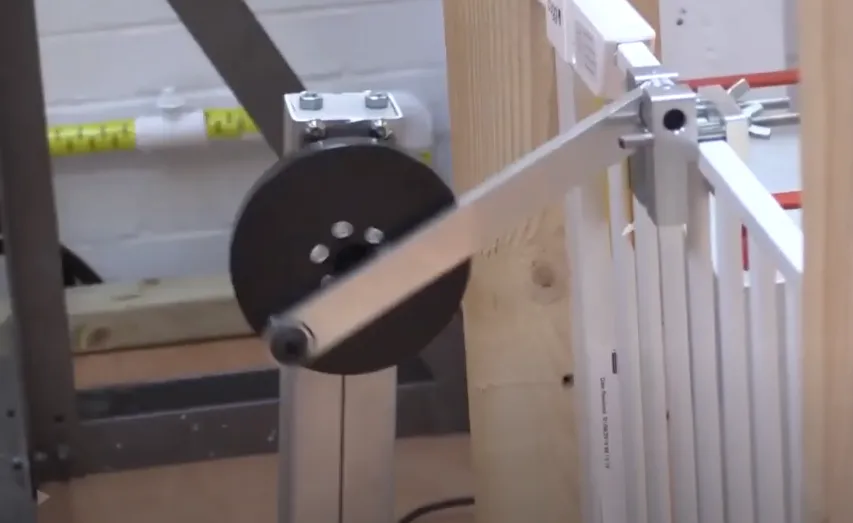CSA O121 Plywood Testing Used in Children’s Furniture Frames
The CSA O121 Plywood Standard, developed by the Canadian Standards Association (CSA), sets out comprehensive requirements for plywood intended for use as structural components, particularly in furniture. This standard is critical to ensuring that children's furniture adheres to stringent safety and durability criteria. The testing outlined in this standard focuses on plywood’s resistance to bending, compressive strength, and moisture resistance—all vital factors when constructing a piece of furniture that will be used by young children.
The plywood used in children’s furniture frames undergoes rigorous testing to ensure it meets the high standards set forth by CSA O121. This involves several key steps:
- Material Selection: Plywood selected for use must comply with specific thickness and grade requirements as per the standard.
- Preparation of Specimens: Samples are cut to precise dimensions, ensuring consistency across tests.
- Testing Procedures: Plywood undergoes bending and compressive strength tests using specialized testing machines. These machines apply controlled forces to evaluate how well the plywood resists deformation.
- Moisture Resistance Testing: The plywood must withstand exposure to moisture without significant degradation, which is crucial for furniture that will be used in various environments, including humid conditions.
The results of these tests are analyzed meticulously, ensuring that the plywood meets all the stringent requirements specified by CSA O121. Compliance with this standard helps manufacturers produce safe and durable children’s furniture frames, reducing the risk of accidents or injuries to young users.
| Test Parameter | Description | Acceptance Criteria |
|---|---|---|
| Bending Strength Test | Plywood sample is bent until failure, measuring its ability to resist bending under specified loads. | Failure load must be within the acceptable range defined by CSA O121. |
| Compressive Strength Test | The sample is compressed to measure its resistance to compression forces. | Compressive strength must meet or exceed the minimum values specified in the standard. |
| Water Resistance Test (Wetting and Drying) | The plywood is exposed to wetting and drying cycles to assess moisture resistance. | No more than a certain percentage increase in thickness is allowed after exposure. |
In summary, the CSA O121 Plywood Testing ensures that children's furniture frames are made from high-quality plywood that meets strict safety and durability standards. This testing process plays a crucial role in protecting young users by minimizing the risks associated with poorly constructed furniture.
Industry Applications
The application of CSA O121 Plywood Testing extends beyond just children’s furniture. This standard is equally relevant for other sectors where plywood is used as a structural component, such as in:
- Furniture Manufacturing: Ensuring the safety and durability of all types of furniture, including desks, chairs, and beds.
- Manufactured Housing: Plywood is used to construct walls and floors for mobile homes and recreational vehicles.
- Building Construction: Plywood can be used in subflooring, sheathing, and interior partitions where structural integrity is crucial.
In each of these industries, the testing procedures outlined by CSA O121 provide a uniform approach to quality control. By adhering to this standard, manufacturers ensure that their products are not only safe but also meet international benchmarks for safety and performance.
Why Choose This Test
Selecting CSA O121 Plywood Testing is essential for several reasons:
- Regulatory Compliance: Meeting the requirements of this standard ensures that your products meet international safety regulations and comply with local standards.
- Quality Assurance: Rigorous testing enhances product quality, leading to safer and more durable furniture frames.
- Risk Management: By identifying potential issues early in the production process, manufacturers can mitigate risks associated with poorly constructed furniture.
- Customer Confidence: Demonstrating compliance with CSA O121 reassures customers of the quality and safety of your products.
The testing process is not just about meeting a standard; it’s an investment in product reliability and user safety. By choosing this test, manufacturers can gain a competitive edge by offering safer, more reliable furniture frames that meet international standards.
Use Cases and Application Examples
The application of CSA O121 Plywood Testing in children’s furniture manufacturing is critical for ensuring the safety and durability of frames used by young users. Here are some specific use cases:
- Desk Frames: Ensuring that desk frames can withstand the weight of books, computers, and other items without bending or collapsing.
- Chair Frames: Testing chair frames to ensure they can support a child’s weight without deforming over time.
- Bed Frames: Verifying that bed frames are strong enough to provide stable support for young children while also being resistant to moisture and wear.
- Cradles: Cradles must be particularly robust, so testing ensures they can withstand the weight of a baby without collapsing or causing injury.
These examples illustrate how CSA O121 Plywood Testing is crucial for various components of children’s furniture. By adhering to this standard, manufacturers can ensure that their products meet the highest safety and quality standards.
| Component Type | Purpose | Main Test |
|---|---|---|
| Desk Frame | To support books and computers safely. | Bending Strength Test |
| Chair Frame | To provide stable, supportive seating for children. | Compressive Strength Test |
| Bed Frame | To offer a safe sleeping environment without collapsing under weight. | Moisture Resistance Test |
| Cradle | To provide stable support for infants while being durable and resistant to moisture. | Compressive Strength Test, Moisture Resistance Test |





